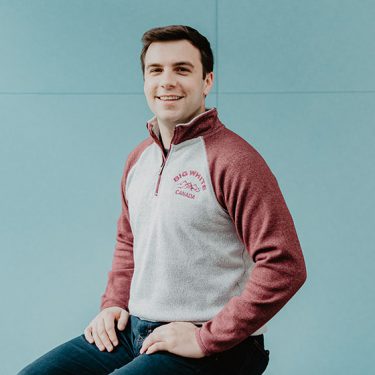Like anything that’s been around for awhile, broadcast television has gone through several eras. There was the Network Era, the Cable Era and now we’re in the Digital or Social Media Era. The ability to disseminate news via a Tweet or Facebook Live changed the way we consume news, and for those inside the newsroom, it changes the way we tell it.
Today broadcasters are able to interact and connect with their audience in real time like never before. A unique changeup that has newsrooms still figuring out the best way to manage it. The industry has likely changed since I stepped away near the end of 2018, but let me take you through a typical day.
A day in the life of a Sports Director is living in a constant state of not knowing when one day ends and the next begins. It’s saying goodnight to the scroll of the teleprompter and waking up to the scroll of Twitter. It’s finding moments to disconnect when all you want to do is stay connected. It’s a life I lived, loved and ultimately left… but one I look back on and cherish.
Every local TV market has a different sports landscape. My home, Eugene, Oregon, is the rare small market budget with big market teams. Two Division 1 colleges (Oregon/Oregon State), Portland Trail Blazers, Track & Field Olympic Trials, Minor League Baseball and a strong landscape of high school sports.
Each day I woke up thinking how could I get the most out of the resources I had while trying to figure out how to make today’s story different than yesterday. No two days were the same, but what follows is how one day might unfold.
8:00am — As I mentioned above, the first thing I would do in the morning was grab my phone and scroll Twitter. The scroll is to make sure there was no overnight or early morning breaking news.
8:30am-12:30pm — Most days the morning to mid-afternoon slot was sprinkled with various media availabilities for the college sports teams. Filming some practice, interviewing student-athletes, coaches and grabbing content for that night’s newscasts.
12:30–2:30pm — When there wasn’t a later practice, this was the window to grab lunch, grab a nap and continue keeping an eye on social media channels for breaking news.
2:30–6:30pm — After a morning spent gathering content, it was time to head into the station and start building the 5 & 6pm sportscasts. I come with an idea of how the show will look and stay nimble and ready to throw out the rundown when news breaks minutes before the 5pm newscast. Covering a college sports team lent itself to many late breaking stories about sought after high school athletes announcing commitments on social media. Some complete with high value video productions to make the announcement.
7:30–10:00pm — After the 6pm news there was time to take a quick dinner break, when there weren’t any evening events. After a quick bite it was right back to work building the 11pm newscast, and for us in Eugene, also organizing a half hour nightly sports show. The good people of the Willamette Valley love their sports.
In 2015 one story that took on a life of its own on Twitter was the start to NBA free agency. The Mavs and Clippers were both closing in on Deandre Jordan. At the 11th hour Jordan was locked in a house in Dallas meeting with players from both teams. At this point an emoji battle broke out on Twitter amongst athletes. I spent the better part of an hour building a video to tell the story as it unfolded on Twitter.
I replicated the same moment using Tagboard and it took a fraction of the time and tells the story in a much easier video to follow.
11:00pm — The final newscast of the day. Time to wrap up everything that happened throughout the day and add to the stories from the 5 & 6 o’clock newscasts. Often times the addition comes from viewer reaction to the days top stories that broke prior to the 5 & 6 pm newscasts. Today’s viewer experience should feel interactive. What do fans think of a new commit? Where do viewers stand on a divisive subject of an investigation surrounding their favorite team or player? Those are authentic perspectives that further the story, but they can be difficult to track down or visualize the way I wanted.
Twitter is the water cooler of the digital age. Only we’re no longer restricted to the opinions of our co-workers. Those authentic conversations happen across a diverse audience on Twitter every moment of every day. As a sports director my role isn’t to tell my version of a story, it’s to capture all voices and present all angles of the story to my viewers. With social media the story never sleeps, so how could I?
